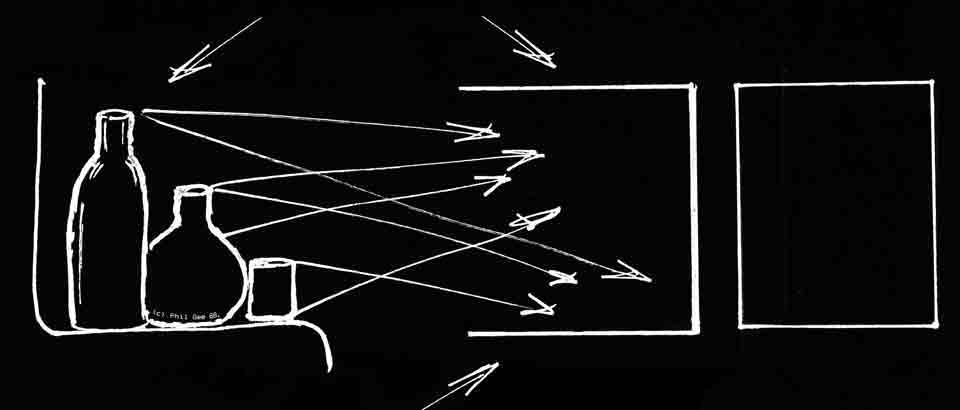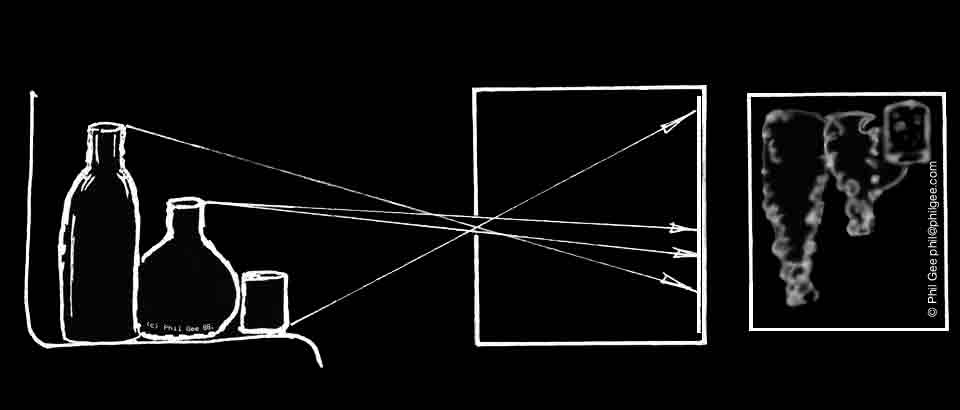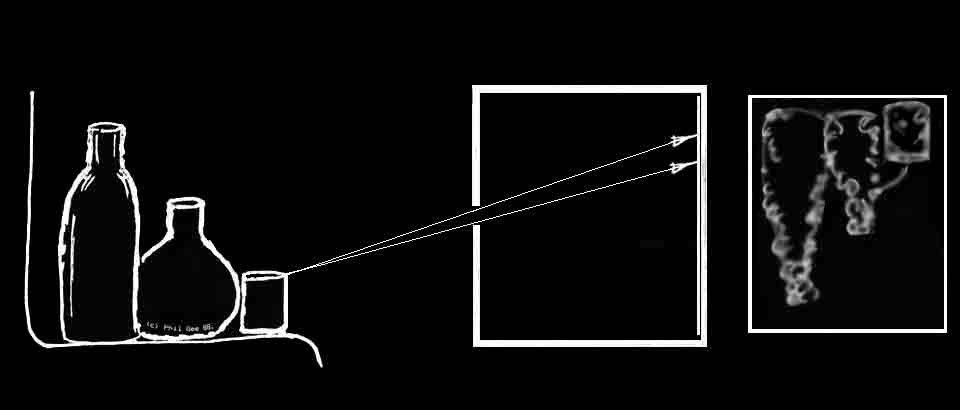Basic Imaging Systems
If we place a piece of photosensitive material ( Film or Sensor) in front of a object the information reflected back from every point and the ambient light will effect every point on the Film or Sensor making the creation of an image of the subject impossible.
We need to either use a coherent collimated light source and reference so only a tight bundle of light is 'reflected' (scattered) from each point as in the production of Holograms using LASER light
Or we need to be able to limit the number of reflected rays that fall on the Sensor to those that are unique to a specific point on the object
The simplest way to do this is by using a small Hole in an otherwise light tight box ref Fig 2
The image is produced by a series of fuzzy blobs created by the bundle of light rays passing through the Hole for each point on the subject
The size of the fuzzy blob is dependent upon the size of the Hole and its distance from the imaging surface (Film or Sensor) in a Pin Hole image everything is equally Fuzzy. ref notes on Pin Hole Photography
To produce an image that appears sharper it is necessary to use as small a Hole as possible (Pin Hole) unfortunately reducing the size of the hole increases the effects of Diffraction which effectively cause the bundle to expand. Also less light is able to get through necessitating a highly sensitive receiver or longer exposure times
However a Pin Hole is cheap and many CCTV cameras use Pin Hole imaging devices rather than lenses.
If you move the cursor over the above image you can compare Pin Hole and Lens System
If we replace the Pin Hole with a Lens it is possible to reproduce a point on the subject as sharp point on the sensor i.e. bring it into Focus
An additional advantage is that as the lens is much larger than the Pin Hole it is able to collect much more of the light reflecting from a point on the subject and focus it on a specific point so requiring less Exposure Time
Disadvantage of a lens system
1. A lens is relatively expensive to manufacture
2. It is not as robust as a Pin Hole
3. It can only bring points on the same plane into sharp focus at a time, This plane is called the Principle Plane of Focus (PPF) and is at right angles to the optical axis
The human eye is similar but is constantly refocusing and the way the brain images gives us the impression that the whole scene is in sharp focus if it is not we get spectacles
© 1982 Phil Gee

